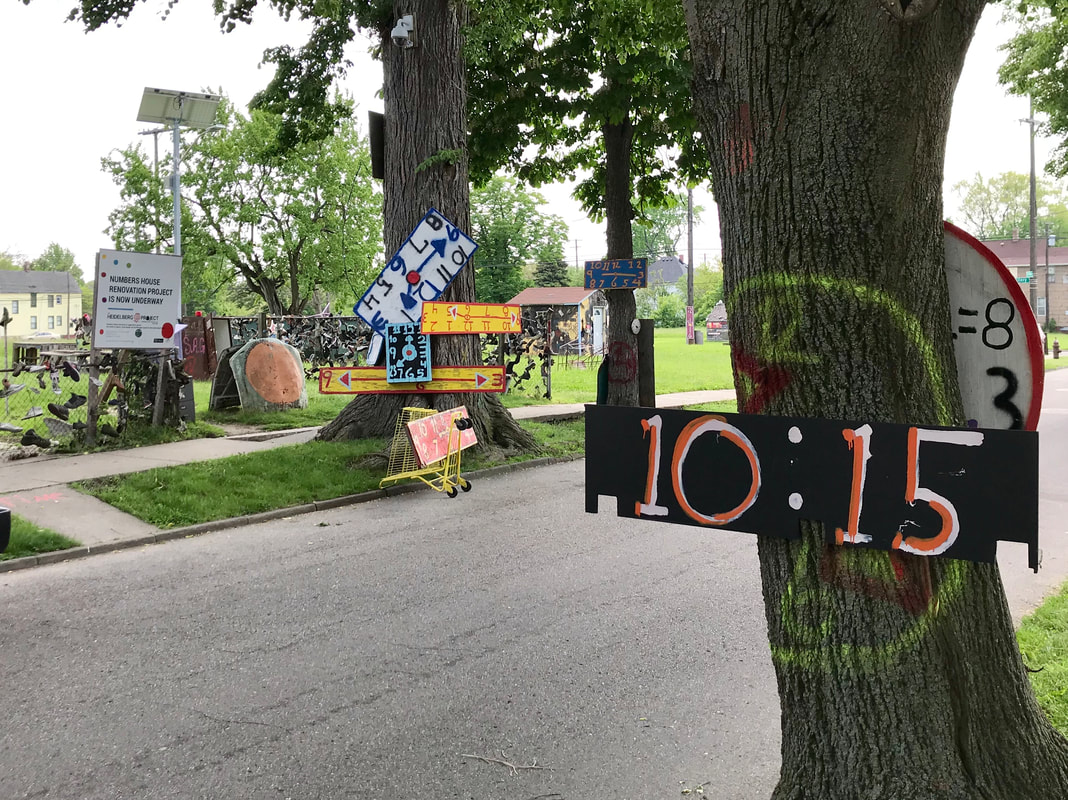The image of Detroit as a fallen city is widespread and even stubborn. When I told my friends and family about spending this summer in Detroit, all I heard back was unanimous assertions on how desolate and battered this place should be, together with concerns about my safety. No one was interested in the entrepreneurial and social work I would be doing, nor did anyone think that Detroit had any opportunity to be revived again by any means. Although a little doubted and worried about my decision, my apprehension was swept away as soon as I got off the plane, immersed in this surprisingly vibrant city.
I was first impressed by the consistent love Detroit people had toward their city. No matter whom I talked with, local or relocated, no matter where I met them, on random streets, under working situations, or at social events, every single conservation showed their pride of being part of Detroit and their genuine hope that a visitor like me could explore the best of city. Their words convinced me how unfair the commonly perceived “hopeless” image of Detroit was: people here held collective hope of seeing the city "rise from the ashes" with aids of modern approaches, and they were motivated to work for this goal on a daily base.
The bus tour and scavenger hunt offered me another unique perspective to look at Detroit — one about the boundless creativity people expressed through art. If I could only use one word to describe the artwork in Detroit, that would be “wild”: no formalized style and no similar genre, as if anything could be turned into an irreplaceable art piece here at this innovative land. Passing between buildings on the bus, one could expect to see murals on almost every wall, each conveying ideas special to itself. As part of the tour, we also visited the world-famous Heidelberg Project, an urban neighborhood in which everything including the buildings was part of the exhibition and clocks made from wastes spread around the whole area. Talking with the main artist Tyree Guyton later, I not only appreciated the philosophical meaning behind the project with his question “what time is it”-- “now,” but also was moved by Detroit artists’ devotion to the faith of the flourishing in their own community.
Working at TechTown with Andy and Becca on projects about alumni, I hope to employ data science to facilitate more beneficial programs to both entrepreneurs and local residents, as well as reduce the deficiency of post-program involvements of the alumni at TechTown. Our technical skills in computer science will also contribute to improving the efficiency of due diligence and communications both inside the corporation and between the whole entrepreneur community. Most importantly, I hope to speak for Detroit with my own experience here, letting as many people as possible to believe in the great potential of this city to restore its prosperity.
I was first impressed by the consistent love Detroit people had toward their city. No matter whom I talked with, local or relocated, no matter where I met them, on random streets, under working situations, or at social events, every single conservation showed their pride of being part of Detroit and their genuine hope that a visitor like me could explore the best of city. Their words convinced me how unfair the commonly perceived “hopeless” image of Detroit was: people here held collective hope of seeing the city "rise from the ashes" with aids of modern approaches, and they were motivated to work for this goal on a daily base.
The bus tour and scavenger hunt offered me another unique perspective to look at Detroit — one about the boundless creativity people expressed through art. If I could only use one word to describe the artwork in Detroit, that would be “wild”: no formalized style and no similar genre, as if anything could be turned into an irreplaceable art piece here at this innovative land. Passing between buildings on the bus, one could expect to see murals on almost every wall, each conveying ideas special to itself. As part of the tour, we also visited the world-famous Heidelberg Project, an urban neighborhood in which everything including the buildings was part of the exhibition and clocks made from wastes spread around the whole area. Talking with the main artist Tyree Guyton later, I not only appreciated the philosophical meaning behind the project with his question “what time is it”-- “now,” but also was moved by Detroit artists’ devotion to the faith of the flourishing in their own community.
Working at TechTown with Andy and Becca on projects about alumni, I hope to employ data science to facilitate more beneficial programs to both entrepreneurs and local residents, as well as reduce the deficiency of post-program involvements of the alumni at TechTown. Our technical skills in computer science will also contribute to improving the efficiency of due diligence and communications both inside the corporation and between the whole entrepreneur community. Most importantly, I hope to speak for Detroit with my own experience here, letting as many people as possible to believe in the great potential of this city to restore its prosperity.


 RSS Feed
RSS Feed
